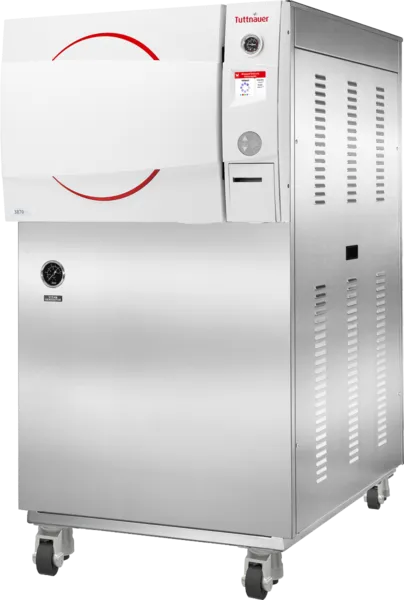It was found that The virus that causes coronavirus disease 2019 (COVID-19) is stable for several hours to days in aerosols and on surfaces, according to a new study from National Institutes of Health, CDC, UCLA and Princeton University scientists in The New England Journal of Medicine. Healthcare settings are vulnerable to the introduction and spread of SARS-CoV-2, and the stability of SARS-CoV-2 in aerosols and on surfaces likely contributes to transmission of the virus in healthcare settings. Tuttnauer, a member of the Infection Control community, plays an essential role in the daily battle against cross-infection. Therefore, we take the most extreme measures of fighting harmful pathogens - bacteria and viruses like the novel coronavirus, protecting sterile processing professionals and the healthcare environment.
The need to protect sterile processing professionals, healthcare worker and patients has driven Tuttnauer's R&D department to investigate the potential risks of using an autoclave and design a new coronavirus protective shield of defence. We have called it the Virus protective shield; in fact, it provides extra protection against any harmful viruses like the Coronavirus.
The Challenge: Ensuring air is treated before removed from the autoclave chamber
Over the years, medical instruments have become more sophisticated; many of them made of extremely narrow tubes and folds. One of the challenges of the sterilization process is the air removal stage, especially when considering narrow, hollow, and wrapped instruments. Complete air removal is needed to verify the sterilization process since steam can only penetrate where air is removed. The most advanced and efficient air removal method is by vacuum.
But is the air removed from the autoclave treated?
When you start a sterilization cycle, the first phase is air removal, which occurs before sterilization has begun. The air removal will eventually enable ideal steam penetration during the sterilization phase.
Think about it: a contaminated load enters the Autoclave, the cycle starts, initiating the first stage of air removal from the autoclave chamber. Today, with the novel coronavirus pandemic and the staggering cross-infection rates, we developed an extra safety measure that secures the air released from the Autoclave at the pre-vacuum stage. The load and air in the autoclave chamber are treated, making it free of viruses minimizing the threat of Coronavirus being released into the air.
How does the new virus protection cycle work?
The new Virus Protective Shield cycle was designed to address harmful viruses as the Coronavirus, before the air removal stage. Air removal will occur only after the space inside the chamber has reached disinfection, significantly reducing the risk for contaminated air being released into the clinic.
Applying the virus shield protective cycle creates the desired safe external environment for the autoclave users and staff, and only then can the autoclave cycle run.

Conclusion
Patients and physicians, expect to be safe at the hospital and free from any potential sources of infection, especially during a crisis, but also sterile processing professionals need extra protection. The processes and the systems within the hospital become even more critical in order to keep the medical staff safe from disease transmission. This is why during times of pandemics extra safety measures are developed. Tuttnauer has provided a meaningful contribution by offering an important upgrade to the HSG autoclave by adding a virus protective shield. The HSG is a unique, cost-effective medical autoclave that treats the air removed from the Autoclave, by adding another layer of protection, never used before.
About Tuttnauer
Tuttnauer provides end to end sterile processing solutions for medical clinics and sterile processing departments including advanced autoclave sterilizers, washer-disinfectors, Hydrogen Peroxide Vapor sterilizers, indicators, and sterile processing products. The HSG autoclave with a virus protective shield is a highly advanced autoclave explicitly developed for dental, ophthalmic and medical practices by providing an extra layer of protection. The Autoclave goes above and beyond standards by meeting all sterilization needs and creating cyclic parameters that accommodate with the most challenging loads, ensuring load sterility, efficient drying, helping dentists achieve today's challenging workloads and provide superior patient care, without risking cross patient contamination.